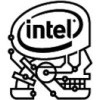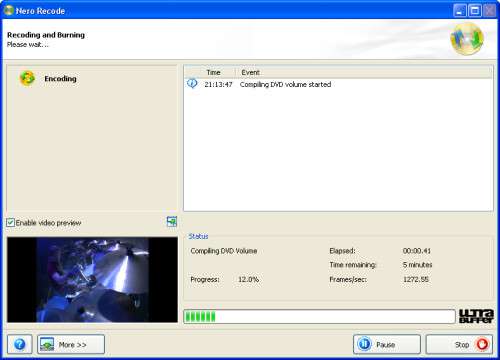- Qualcomm Launches Snapdragon 4 Gen 2 Mobile Platform
- AMD Launches Ryzen PRO 7000 Series Mobile & Desktop Platform
- Intel Launches Sleek Single-Slot Arc Pro A60 Workstation Graphics Card
- NVIDIA Announces Latest Ada Lovelace Additions: GeForce RTX 4060 Ti & RTX 4060
- Maxon Redshift With AMD Radeon GPU Rendering Support Now Available
Intel Skulltrail Enthusiast Platform Preview

Consisting of two Extreme Quad-Core processors, Intel is looking to redefine what we know as “high-end”. Skulltrail is touted as being the “ultimate” enthusiast platform, offering SLI and Crossfire support, huge overclocking abilities and enough sheer power to make the competition weep.
Page 8 – Multi-Media: DivX 6.7, Nero Recode
DivX 6.7
One area where Intel’s 45nm processors excel is with multi-media encoders that utilize the SSE4 instruction set. Beginning with DivX 6.6.0, the set is fully supported and will make a huge difference when using the “Experimental Full Search” algorithm to encode.
When using DivX 6.6.0+, you will notice that the “Experimental Full Search” is left at Disabled by default. This, as we found out, is a good thing since it does indeed take longer overall. If you are a media enthusiast who cares a lot about quality and doesn’t mind the extra wait, then this might be the route to take. The end result may vary depending on certain factors, such as original video codec, original video quality and video length.
For our testing, we are using a 0.99GB high-quality DivX .AVI of Half-Life 2: Episode Two gameplay. The video is just under 4 minutes in length and is in 720p resolution, which equates to a video bit rate of ~45Mbps, not dissimilar to standard 720p movies. We converted the video two different ways.
First, we encoded the video at the same resolution but a lower quality, so as to achieve a far more acceptable file size (~150MB). The second method is encoding of the same video, but to a 480×272 resolution, similar to what some mobile devices use. This last method is not entirely realistic as it’s unlikely the exported video would work on such a device, but the test is to see the benefits of SSE4 in general.

There isn’t a huge benefit here to speak of, but there is a small one. Nothing that would warrant a complete dual-CPU setup, however. With more comprehensive projects, the CPU usage may increase.
Nero Recode
Where video conversion is concerned, one of the applications I’ve grown to enjoy over the years is Nero Recode. Though it’s export options are extremely limited, they offer high image quality and decent file weight. Nero 8 was released a few months ago, but still lacks support for SSE4.
In a meeting with Nero in September, we questioned whether or not we would see SSE4 support in a future update, but we were told that there is no immediate plans to implement it, although the “guys in the lab” are taking a look at it. Nero exhibits confidence that their application is optimized enough as is, and SSE4 is not needed.
For this test, we’ve first ripped our copy of our concert DVD, Killadelphia, by Lamb of God. The original DVD rip weighs in at 7.7GB, but we are using Nero to reconvert it to 4.5GB so that it will fit on a normal-sized DVD to use as a backup. Our “mobile” test consists of converting the main concert footage to the same resolution a Sony PSP uses (480×272) which results in a 700MB file.

While Recode won’t take advantage of eight-cores (at least in my personal tests), it does take advantage of more than four, evidenced by the mobile recode which was cut down by a full minute.
Support our efforts! With ad revenue at an all-time low for written websites, we're relying more than ever on reader support to help us continue putting so much effort into this type of content. You can support us by becoming a Patron, or by using our Amazon shopping affiliate links listed through our articles. Thanks for your support!







